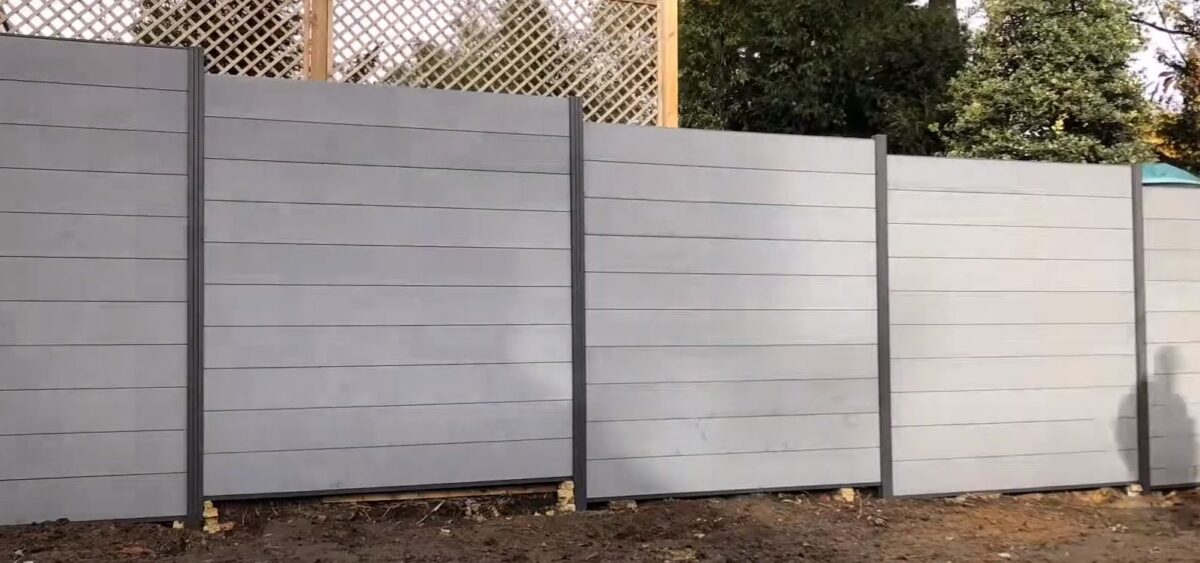Cost Comparison: DIY vs. Professional Installation
When considering whether to install a fence yourself or hire professionals, the main factor often revolves around cost. Let’s break down the expenses involved in both options.
DIY Fence Installation
- Materials: Purchasing the fencing materials yourself can be cost-effective, especially if you find good deals or buy in bulk.
- Tools: You may need to buy or rent tools such as post hole diggers, levels, and power drills, which can add to the initial cost.
- Time: Installing a fence yourself requires a significant time investment, which can be a hidden cost if you need to take time off work or other activities.
Pros:
-
- Potentially lower upfront cost.
- Control over the quality of materials and construction.
Cons:
-
- Requires considerable time and effort.
- Risk of mistakes that could lead to additional costs or subpar results.
Professional Fence Installation
- Labour Costs: Hiring professionals involves paying for labour, which can be a significant part of the total cost.
- Expertise: Professionals bring experience and expertise, ensuring the job is done correctly and efficiently.
- Warranties: Many contractors offer warranties on their work, providing peace of mind and protection against future issues.
Pros:
-
- Professional quality and finish.
- Saves time and effort.
- Warranty and after-sales support.
Cons:
-
- Higher initial cost due to labour charges.
Health and Safety Considerations
When installing a fence, health and safety are paramount.
DIY Installation:
-
- Protective Gear: Wear gloves, safety glasses, and sturdy footwear to prevent injuries.
- Tool Safety: Follow safety guidelines for using tools to avoid accidents.
- Manual Labour: Digging post holes and handling heavy materials can be physically demanding and pose a risk of injury.
Professional Installation:
-
- Trained Professionals: Experienced contractors follow safety protocols and have the proper equipment to handle the job safely.
- Risk Mitigation: Reduced risk of personal injury and property damage.
Types of Fences and Their Installation Complexity
Different fence materials have varying levels of installation difficulty. Here’s a look at common types and what to expect:
Wooden Fences
-
- DIY Feasibility: Moderate to high. Requires basic carpentry skills.
- Installation Complexity: Digging post holes, setting posts in concrete, and assembling panels.
- Maintenance: Regular staining or sealing needed.
Vinyl Fences
-
- DIY Feasibility: Moderate. Easier to handle with pre-fabricated panels.
- Installation Complexity: Aligning panels and securing them to posts.
- Maintenance: Low maintenance, occasional cleaning.
Metal Fences
-
- DIY Feasibility: High. Requires precision and potentially welding skills.
- Installation Complexity: Setting posts securely and attaching metal panels or bars.
- Maintenance: Regular rust prevention.
Composite Fences
-
- DIY Feasibility: Moderate to high. Heavier materials require careful handling.
- Installation Complexity: Similar to wood but generally more durable and heavier.
- Maintenance: Low maintenance, resistant to rot and pests.
Local Considerations in Auckland
Auckland’s diverse climate and terrain can impact fence installation.
- Browns Bay: Coastal conditions with salty air can affect material choice. Aluminium or vinyl fencing is ideal for its resistance to rust and corrosion.
- Panmure: Urban environment with potential for high traffic and pollution requires durable and low-maintenance materials like composite or vinyl.
DIY vs. Professional Installation
| Fence Type | DIY Feasibility | Installation Complexity | Maintenance Needs | Cost Efficiency (DIY vs. Pro) |
| Wooden Fences | Moderate to high | Moderate to complex | Regular staining/sealing | DIY: Moderate, Pro: High |
| Vinyl Fences | Moderate | Moderate | Low, occasional cleaning | DIY: Moderate, Pro: Moderate |
| Metal Fences | High | High, requires precision | Regular rust prevention | DIY: High, Pro: High |
| Composite Fences | Moderate to high | Moderate to complex | Low, resistant to rot/pests | DIY: Moderate, Pro: High |
Technical Insights on Fence Installation
Wooden Fences
Material Considerations:
-
- Choose treated wood to prevent rot and insect damage.
- Ensure posts are set in concrete to enhance stability.
Installation Tips:
-
- Use a level to ensure posts are straight.
- Allow concrete to cure fully before attaching panels.
Vinyl Fences
Material Considerations:
-
- Pre-fabricated panels simplify the installation process.
- Ensure posts are securely set to prevent movement.
Installation Tips:
-
- Follow manufacturer instructions carefully.
- Allow for thermal expansion and contraction in the installation process.
Metal Fences
Material Considerations:
-
- Use galvanised or powder-coated metal to prevent rust.
- Secure posts firmly to handle the weight of the metal panels.
Installation Tips:
-
- Ensure precise measurements and alignment.
- Regularly inspect for signs of rust and address promptly.
Composite Fences
Material Considerations:
-
- Heavier than wood or vinyl, requiring strong posts and supports.
- Resistant to most environmental factors.
Installation Tips:
-
- Handle with care to avoid damaging the composite material.
- Ensure even spacing and alignment of panels.
Choosing whether to install a fence yourself or hire professionals depends on various factors, including cost, time, expertise, and the specific requirements of your property. By considering these elements, you can make an informed decision that meets your needs and budget. For professional fence installation advice and assistance, consider engaging Quality Fencing Auckland for your fencing project.
Other Locations:



